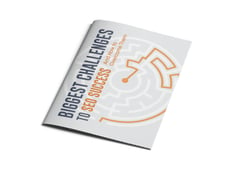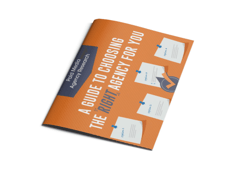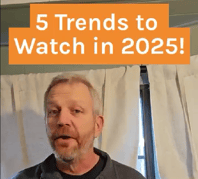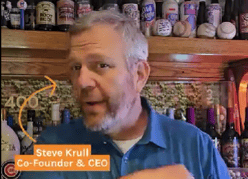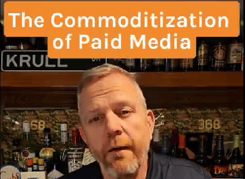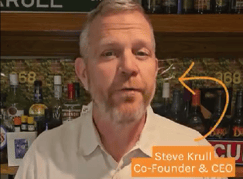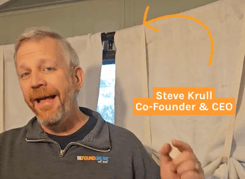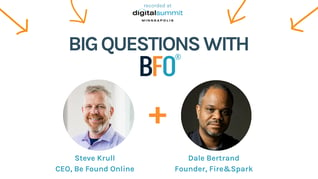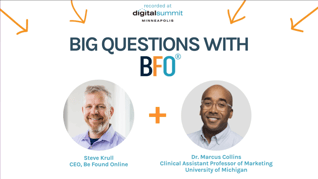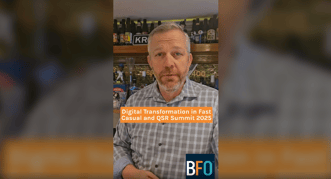
You took the time to create posts for your blog. Maybe you even hired a writer to do it. You did all this to increase traffic to your website, attract new business, build your brand, and drive revenue.
Then you look at your Google Analytics reports. Despite your investment of time and money, the content has done nothing more than create a small blip in traffic. As you sit back and think about it, you may start to think content marketing isn’t really for you. Is it possible? Well, sure, there’s a small chance that’s true. More likely, however, it’s something else.
At BFO, we’ve found there are 7 main reasons your blogs might not be driving traffic.
1. You’re Not Following Google’s E-A-T Guidelines for Content.
E-A-T stands for Expertise, Authoritativeness, and Trustworthiness.
You (your brand) need to be an expert in your field. Your content – and the website where it resides – should demonstrate you to be an authority on the subject. And your content must be presented in a way that clearly shows you can be trusted.
Google doesn’t say how to do this. Their content guidelines remain basic and general, saying if it’s good for users, it’s good for Google. They don’t get much more specific than this with their ‘Steps to a Google-friendly site’ web page declaring you should “give visitors the information they’re looking for,” “make sure other sites link to yours,” and “make your site easily accessible.”
This leaves the onus on you and your content strategy to determine exactly what qualifies as quality content that will build your expertise, authoritativeness, and trustworthiness, aka credibility.
You need to factor this into your content strategy. For example, some of your content should be more general for your top-of-funnel audience. Some content should be more focused on bottom-of-funnel users, to move them closer to the sale or conversion goal. Additionally, you need to consider how your website should be optimized to position your content in a way that reflects and maximizes its value.
For example, at BFO, we love to cook and share recipes. That said, however, we wouldn’t write about culinary topics. It’s not our company’s expertise. Content like that would be off-brand. Furthermore, our website does not present us as a source for culinary advice.
Now, we could post our favorite holiday dishes, but they will never rank or drive traffic. In fact, content like that could hurt us because it’d confuse Google on what niche we’re in.
Content must be on brand and aligned with your business’ expertise to drive traffic.
How to Achieve E-A-T with Your Content
First, you need to establish your niche. If you’re a digital marketing agency, for example, you must find what makes you unique. Although there may be a thousand-and-one-million agencies out there, what makes you unique makes you stand out from the rest.
Next, you need comprehensive content. Two hundred words won’t cut it – not regularly, at least. Create long-form content by digging into your subject and providing insight-filled details. It should contain links to both internal and external content related to the subject. Think content along the lines of “Your Full Guide to SEO.”
Google likes comprehensive content like this. Your audiences do too.
In fact, your audiences may like your content so much that they share it or reference it on their own site. Queue backlinks. A backlink is basically a positive vote for your content along their E-A-T guidelines (shoutout to BackRub, Google’s original name).
The more you E-A-T, the more you grow. Ideally, this will lead to building a content hub around your expertise, which will, in turn, enhance your authority and establish trust with your audience and Google.
2. Your Blog Needs to be More User-centric.
When you start thinking about content in terms of its SEO value, it can be easy to lose sight of who ultimately determines the value of your content – your user!
While we want our content to appeal to search engines, bot-friendly content that gets no clicks from your target audience won’t rank well, resulting in weak traffic. Content should also not be written simply to express a brand’s point-of-view (POV). While POV is valuable and sets you apart from the competition, every piece expressing a POV should answer your users’ question:
What’s in it for me?
Writing User-centric Content
The simplest way to make your content user-centric is to write it to help people. In most cases, you will be sharing information to help your audience learn something new and useful. In a few instances, you might entertain your audience (ie., parody websites), create discussion (Reddit and Quora), or share an opinion.
This doesn’t mean you can’t use your blogs to advertise yourself. You can and should note your expertise and services on the subject. But that shouldn’t be the focus of the piece. Instead, your pieces should provide a value that improves the lives and careers of your readers.
You shouldn’t feel like you’re giving away your valuable knowledge for free though. Google rewards you for content like this!
3. Nobody cares what you’re writing about
So now you’ve already established your niche and proven your credibility and expertise to Google through high quality content. But you just published a new blog and what’s this? No traffic? Nada, nothing.
This is where search volume comes into play. There needs to be a question around the topic you end up writing about. For example, we’d never publish a blog like “Why aren’t SEOs good at soccer?” (I have no idea whether or not SEOs are good at soccer, by the way). Even with other blogs being highly relevant to your audience and your E-A-T in check, people need to be actively searching for the topic.
Most of the time when we’re talking driving traffic, it’s about people either sharing your content or finding you in organic search. And, surprise, both of these require people caring about your blog topic.
Creating Content People Care About
To create relevant content, you need to optimize for what your target audience is searching for. This involves understanding their search terms, which keywords to target, and what relates to that topic in the mind of your audience.
#4. You’re using the wrong keywords
Finding the right keywords can be tough. For example, changing a single word in a user search term can be the difference between a search volume of 200 or 2,000. You must find the keywords that match your users’ search terms. Many times this involves thinking of synonyms or different ways to search for the same thing.
Then, you must evaluate their search volume. Will the keyword you’ve identified produce the volume of traffic you seek?
Next, you need to use keywords tactically. This includes crafting meta descriptions that feature the keyword. The keyword should also appear in the URL (when possible) and in headers and title tags.
Proper keyword use is essential to ensure your blog is “SEO’d”, so it can be found. You could write the most user-centric, relevant post, but if you fail the SEO side, there’s a good chance no one will find and read it.
Keyword Research Tools for Finding the Right Keywords
To find keywords, you can use keyword research tools like SEMrush.com, AHRefs.com, and Moz.com. These do often come with a fee. Alternatively, you can use free keyword research tools like Google Trends or Google Keyword Planner found in Google Ads. (You can sign-up for Google Ads even if you don’t run any ads.)
#5. You’re Keyword Stuffing
Keywords are important. They help tell search engines what your page is about. Your audience also expects to see them, especially since they (should) correspond to the search term used to find you!
But you can overdo it. Called keyword stuffing, this tactic was once used to rank on Google. It doesn’t work anymore – Google’s figured it out. It’s bad. Don’t do it.
In fact, as Google’s algorithm has evolved through machine learning – today the algorithm is known as RankBrain, it has come to better understand conversational language. Now, keyword stuffing will earn you a penalty, or at the very least a lower ranking. All posts should be written in a conversational tone (like this one is).
How to Write Conversational Content
A good writer knows writing great conversational content doesn’t just happen. Skipping the writing lesson, here are a few practices to keep in mind to make your writing more conversational:
- Use pronouns when appropriate. You may have a keyword you want and need to use, but you shouldn’t overdo it.
- Repetition is important for learning, but it’s not how we talk. Think about how we speak, we don’t repeat the same phrase over and over and over again. We describe what we are talking about. Think about it this way, you’d state your keyword in the introduction or the start of a paragraph; the remainder of the content and language should detail and explain the topic at hand.
- Change up your sentence structure. Some sentences can be complex, weaving additional clauses to enhance or emphasize an idea (like this one). Others can be simple. Vary your sentences to keep your writing and ideas fresh, so your readers stay engaged and moving through your post, being surprised when they finished by how easy and fast it felt to read.
#6. Your content is aimed at the wrong part of the funnel
Most blogs target an audience at the top of your sales funnel, or those not even in the funnel yet. The material aims to inform and educate people just starting to search for or learn about a topic.
For example, think about an eCommerce site selling kitchen knives and utensils. Top-level content would include ‘how-tos’ and guides on the different types of knives. Maybe you’d talk about the different uses for different knives or why a specific material makes for a better blade. A lot of this content would be better targeted to people at the top of the funnel and not to those further along and closer to buying.
Tips for Accurate Targeting
Every industry is different but there are a few principles you can use to evaluate and create properly targeted content.
- Top of the funnel keywords and topics should be broad in nature. Here you might have a guide called “The Complete Guide for Kitchen Knives”.
- Specific keywords should target people ready to buy. For people at this stage, maybe you have an ebook called “Your Guide to Sushi and Sashimi Knives.” This group might even have an interest in content on “Tips to Prepare Great Sushi” or “The Best Seaweed for Your Sushi”.
Mapping the buyer journey can help a lot in creating and accurately targeting your content.
You should also note – as it is a question that comes up often – yes, the more focused your content, the lower the search volume. That’s ok. Individuals searching for those low volume keywords know what they are looking for and are a lot closer to buying, making for a much higher conversion rate and higher value keyword. But we’re talking about driving traffic here. If you want to drive more traffic overall, target the top of the funnel, more informational topics.
#7. Your Site Speed…Is…Slow…
You can apply all of the above principles to your content but if your site loads slowly, well, people won’t wait. You’ll have high bounce rates. According to Google, 53% of mobile site visits leave a page that takes more than 3 seconds to load.
Big pictures slow down sites pretty substantially. And so do pictures that are the wrong size for their container. Once you have your pictures properly sized and compressed, that should resolve about 50% of all your page speed issues. Now let’s fix everything else. Every new page should be tested. Fortunately, Google offers a free tool called PageSpeed Insights.
How to Guarantee Fast Page Speed Loading
Testing is the first step.
After that, you should understand the tools available to your website. For example, if you use WordPress, you could check out our blog on plugins for site speed optimization.
Other simple ways to keep your web pages loading fast include:
- Compress everything.
- Lazy load your pictures
- Use next-generation image formats like .svg or .webp rather than .png or .jpg.
- Only use properly sized images. (You don’t need print quality detail for online content.)
- Minimize your redirects. Get rid of redirect chains.
- Switch from shared hosting to dedicated hosting.
- Add Async and defer to your javascript (depending on what doesn’t break your site).
Avoid These 7 Issues and Drive Blog Traffic Like a Pro
Fast page speed, solid keyword research, and creating well-targeted, relevant, and user-centric content will drive traffic to your blog. While these 7 issues are common, they don’t have to be for you. In most cases, each one (or all of them) can be easily addressed.
Plus, going back and updating older content is a great way to refresh your site and drive traffic without spending the time, energy, or money to create a lot of new stuff.
If you have any questions on any of these items, reach out. We’d be glad to hear from you.

James Willingham
James describes his job at BFO as ‘a dream career,’ and we describe him as a ‘dream employee.’ Firstly, James is a foster parent, who has used his skills in digital marketing to promote foster parenting. Family and inter-personal relationships are paramount, and he incorporates his talent and caring persona in building successful SEM strategies for regional and national accounts and his expertise in paid social advertising on Facebook.
CATEGORIES
SUBSCRIBE TO OUR BLOG
Stay up to date with the latest industry best practices in digital marketing!
















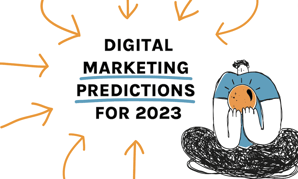
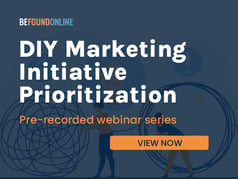





.png?width=339&height=179&name=Webinar%20Banner%20(1).png)

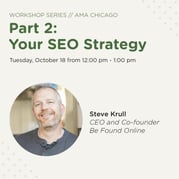

.png?width=339&height=179&name=July%20Webinar%20(Newsletter).png)
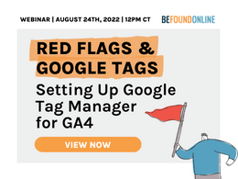
.png?width=339&height=179&name=Webinar%20Banner-April-02%20(1).png)
%20(4).png?width=339&height=179&name=Webinar%20Banner-May-02%20(1)%20(4).png)




.png?width=339&height=179&name=March%202023%20Webinar%20Ad%20(autoresponder).png)



